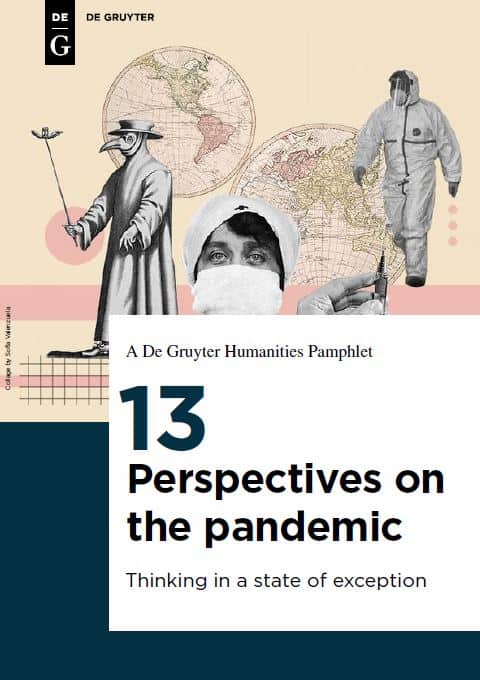Pandemics in History: Global Solidarity is the Only Way Forward
Can history teach us how to deal with Covid-19? Perhaps not. But it reminds us that when faced with global challenges, we need to resist the urge to focus on national solidarities.
This essay was first published in the free digital pamphlet 13 Perspectives on
the Pandemic: Thinking in a state of exception.
Diseases do not respect national borders. Since the beginning of the COVID-19 pandemic, politicians, experts, and journalists have been articulating this fundamental reality over and over again, often combining it with a plea for cross-border cooperation and solidarity. And yet, the responses around the globe have been distinctly national in scope and uncoordinated in character. The first impulse by almost any affected nation was to close borders and restrict travel. The European Union has struggled to come up with a concerted answer, and most governments seem to harbor a hefty dose of skepticism about the capabilities of the World Health Organization.
International Responses
Such tension between the realization that pathogens do not recognize political boundaries and the tendency of states to try and shut down borders anyway has often characterized international responses to the threat of pandemics.
In the nineteenth century cholera came to dominate the European imagination of health threats. The disease originated in South Asia and spread around the globe in several waves starting in 1817, first reaching Europe in the early 1830s. As a catalyst for ideas of the world becoming ever more interconnected, the specter of cholera gave rise to a new form of cooperation between sovereign states and laid the groundwork for today’s global health politics. However, that collaboration has rarely been animated by a spirit of global solidarity. This is the first leitmotif in the history of global health politics: as the reactions to cholera demonstrated, it was often centered around the goal of sealing off Europe or the West from “diseased” parts of the world and of reinforcing national borders through quarantine measures.
As soon as that goal was achieved, the West largely lost interest in the fight against cholera. Ever since the late nineteenth century the disease has been relegated to an afterthought in the West’s imagination. In a global perspective, however, it is still a massive problem, and some of the worst cholera epidemics in history occurred recently: in Haiti after the devastating earthquake in 2010, and in war-torn Yemen after 2016. And yet, the reaction in the West to such mass suffering has been shockingly muted.
There is a second leitmotif in the history of global public health: in the West perceptions of globalization have often been accompanied by notions of acute danger from infectious disease — but those tend to have a fairly short shelf life, and they have not led to sustained efforts by the world’s wealthiest nations. Just compare the massive attention for the 2014–15 Ebola epidemic in West Africa with the fact that Central Africa has been experiencing the second worst Ebola epidemic in recorded history since 2018 — and it has barely caused a reaction.
World Health and Global Solidarity?
There was a brief moment in the mid-twentieth century when it seemed like the international community would break out of the “cycle of panic and neglect” and answer the threat of infectious disease in a spirit of global solidarity. In the 1940s, the idea of “world health” momentarily came to the fore. To many contemporaneous observers it seemed that the world was rapidly “shrinking”— or, as Brock Chisholm, the World Health Organization’s first Director-General, put it: “Until quite recently, man’s environment has been his locality only, his village or town or at most his own country… This situation has changed entirely: the environment of every person is now the whole world.”
“For if it was truly the case that diseases knew no boundaries, then no one would be safe from harm unless everyone was.”
Contemporaries feared that in the dawning “global age” diseases would spread all over the planet with staggering speed. But for once, the heightened sense of threat did not lead to demands that the “healthy” parts of the world cut themselves off from the rest. For if it was truly the case that diseases knew no boundaries, then no one would be safe from harm unless everyone was; the health of any individual was inextricably bound to that of every other person on earth. Consequently, many policymakers and health experts shared a vision of the world coming together as one: fighting diseases on a global scale, “at their source,” in the name of “world health.”
Tackling the Challenges of a Global Age
With early Cold War tensions brewing and perceptions of acute threat from disease soon fading in the West, such aspirations of global communion quickly receded — by the end of the 1940s they already felt like a dream that never was.
But once the immediate danger from COVID-19 is passed, recalling the visions of “world health” can challenge us to take a fresh look at the cyclical dynamics of crisis and oblivion that shape our perception of global health. And they might serve as a reminder that we need to come up with answers that are as global in scope and character as the problems we are facing — and that it is possible to imagine a way of tackling the challenges of the global age that is not focused on national, but on global, solidarities.
Learn more in this related title from De Gruyter
[Title Image by Wellcome Library/Public Domain.]
